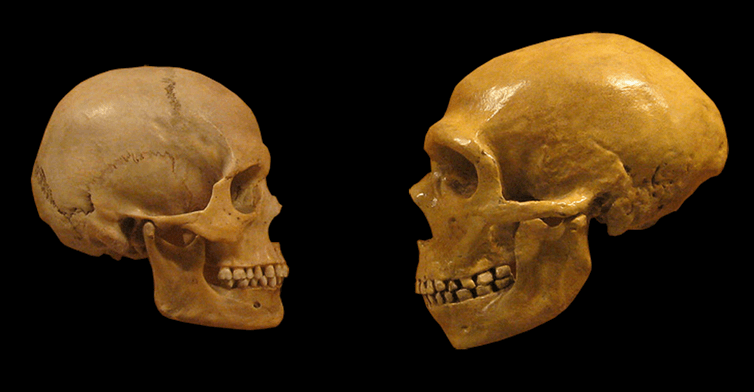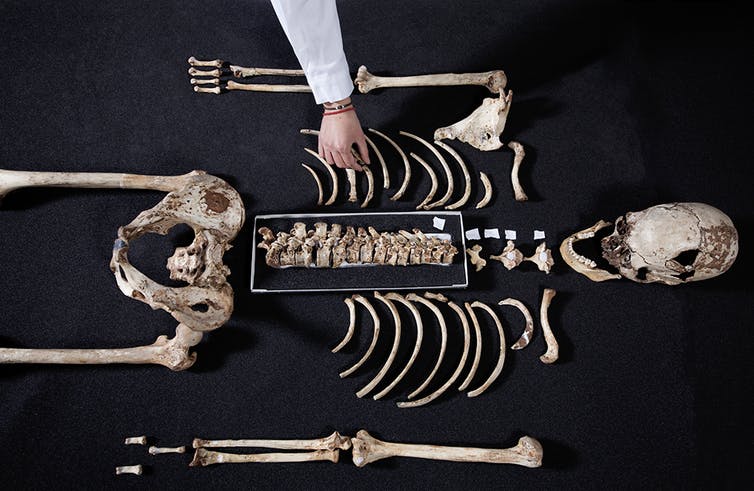
Not so long ago scientists used DNA of one of the oldest English skeletons (10,000 years) to find out how it looked the first inhabitants of Britain. However, ancient DNA of the skeleton is taken not for the first time and reveals amazing facts about our ancient ancestors. The rapid development of genome sequencing over the last few decades opened a new window into the past.
Our ancestors slept with Neanderthals
Archaeologists have long guessed that modern humans and Neanderthals lived together in Europe and Asia, but only recently became known the nature of their cohabitation.
In fact, after 2008 was the first sequenced mitochondrial genome of a Neanderthal (DNA located in the mitochondria of cells), genetics and archaeologists for a long time could not understand whether the people with our closest relative in some way or not.
When in 2010 were fully sequenced the Neanderthal genome, comparing the DNA of modern man has shown that all non-African people have pieces of Neanderthal DNA mixed in the genome. It could happen if humans and Neanderthals mixed with just 50 000 years ago. A few years later this was confirmed.
Mixing allowed the Tibetans to live in the mountains
Oddly enough, our ancestors communicated with Neanderthals not just as friends. When petrified finger found in a cave in the Altai mountains in Siberia, have been sequenced, DNA, and finger, as he thought, belonged to a Neanderthal, genetic analysis showed that it was actually a new kind of man, distinct from, but closely related to the Neanderthals. Analysis of the complete genome showed that these “denisovans” also had sex with our ancestors.
The Tibetans who live among the tallest mountains in the world, capable of surviving at altitudes where the majority of people simply suffocating in the absence of oxygen. Genetic analysis showed that the Tibetans, along with the Ethiopian and Andean highlanders have a special genetic adaptation that allows them to process oxygen in the rarefied mountain air.

We now know that these genetic adaptation to high altitude in Tibetans, they have a specific variant of the EPAS1 gene is actually inherited through ancestral mating with denisovans.
It turned out that the improvement of immunity, metabolism and diet among modern humans is also associated with a useful genetic variants that are inherited as a result of interbreeding with Neanderthals and denisovans.
Our ancestors evolved surprisingly quickly
Crossbreeding with other types explains only a small part of human adaptations. DNA analysis shows us that as our ancestors wandered the world, they evolved in different environments and have adapted to the food faster than previously thought.
For example, the obvious example of human adaptation is the development of tolerance to lactose. The ability to digest milk after three years is not universal – and previously it was assumed that it spread into Europe along with agriculture of the Middle East about 10,000 years ago.
But when we study the DNA of people over the last 10,000 years, this adaptation, which is now commonplace in Northern Europe, was absent 4,000 years ago, and even then was quite a rare phenomenon. This means that the spread of lactose tolerance in Europe was to occur incredibly quickly.
First, the British were dark-skinned
The DNA of one of the first people in Britain, Cheddar Man, shows that he was most likely dark-skinned and blue-eyed. And he also could not digest milk.
Although it is curious and even somewhat surprising to learn that some of the first people inhabiting the island now known as Britain, had dark skin and blue eyes, this striking combination does not so unpredictable given what we know about Paleolithic Europe from ancient DNA. Dark skin was quite common among hunter-gatherers like the Cheddar Man, who lived in Europe for thousands of years after he lived – and the blue eyes were from the Ice age.
Immigrants from the East brought to Europe white skin
So if 10,000 years ago in Europe there was a popular dark skin, how Europeans got their white skin? In Europe there are no more hunter-gatherers, and around the world they have very little. Agriculture replaced hunting as a way of life, and as you know, in Europe, agriculture spread from the Middle East. Genetics has revealed that this change is also associated with a significant movement of people.
We also now know that about 5000 years ago in Europe there was a large influx of people from Russian and Ukrainian steppes (geographically). Along with DNA, these people brought domesticated horses and the wheel in Europe, and yet, perhaps, proto-language, from which came almost all modern European languages.
Most likely, with them, appeared in Europe and white skin. It is believed that light pigmentation of the skin helps people to better absorb sunlight and synthesize vitamin D. it
Five amazing facts about our ancestors that we have learned from DNA
Ilya Hel